
"Rock Around the Clock" is a rock and roll song in the 12-bar blues format written by Max C. Freedman and James E. Myers in 1952. The best-known and most successful rendition was recorded by Bill Haley & His Comets in 1954 for American Decca. It was a number one single for two months and did well on the United Kingdom charts; the recording also reentered the UK Singles Chart in the 1960s and 1970s.

Decca Records is a British record label established in 1929 by Edward Lewis. Its U.S. label was established in late 1934 by Lewis, American Decca's first president Jack Kapp and later American Decca president Milton Rackmil. In 1937, anticipating Nazi aggression leading to World War II, Lewis sold American Decca and the link between the UK and U.S. Decca labels was broken for several decades. The British label was renowned for its development of recording methods, while the American company developed the concept of cast albums in the musical genre.
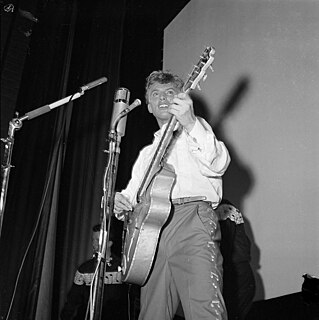
Sir Thomas Hicks,, known professionally as Tommy Steele, is an English entertainer, regarded as Britain's first teen idol and rock and roll star. After being discovered at the 2i's Coffee Bar, he recorded a string of hit singles including "Rock with the Caveman" (1956) and the chart-topper "Singing the Blues" (1957). Steele's rise to fame was dramatised in The Tommy Steele Story (1957), the soundtrack of which was the first British album to reach number one on the UK Albums Chart. He starred in further musical films including The Duke Wore Jeans (1958) and Tommy the Toreador (1959), the latter spawning the hit "Little White Bull".
"Blues in the Night" is a popular blues song which has become a pop standard and is generally considered to be part of the Great American Songbook. The music was written by Harold Arlen, the lyrics by Johnny Mercer, for a 1941 film begun with the working title Hot Nocturne, but finally released as Blues in the Night. The song is sung in the film by William Gillespie.
"Chattanoogie Shoe Shine Boy" is a popular song written by Harry Stone and Jack Stapp and published in 1950. It is the signature song of Red Foley who recorded it in late 1949. The song has been covered by many artists including Bing Crosby, Frank Sinatra, and Faron Young who scored a hit with the song in 1959.
"Imagination" is a popular song with music written by Jimmy Van Heusen and the lyrics by Johnny Burke. The song was first published in 1940. The two best-selling versions were recorded by the orchestras of Glenn Miller and Tommy Dorsey in 1940.

"My Melancholy Baby" is a popular song published in 1912 and first sung publicly by William Frawley. The music was written by Ernie Burnett (1884–1959), the lyrics by George A. Norton.

"Basin Street Blues" is a song often performed by Dixieland jazz bands, written by Spencer Williams in 1928 and recorded that year by Louis Armstrong. The verse with the lyric "Won't you come along with me / To the Mississippi..." was later added by Glenn Miller and Jack Teagarden.
"(It Will Have to Do) Until the Real Thing Comes Along" is a popular song first published in 1936.

"Way Down Yonder in New Orleans" is a popular song with music by John Turner Layton Jr. and lyrics by Henry Creamer. First published in 1922, it was advertised by Creamer and Layton as "A Southern Song, without A Mammy, A Mule, Or A Moon", a dig at some of the Tin Pan Alley clichés of the era.
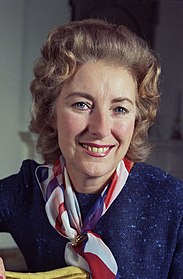
Dame Vera Margaret Lynn was an English singer and entertainer whose musical recordings and performances were very popular during the Second World War. She is honorifically known as the "Forces' Sweetheart", having given outdoor concerts for the troops in Egypt, India and Burma during the war as part of the Entertainments National Service Association (ENSA). The songs most associated with her include "We'll Meet Again", "(There'll Be Bluebirds Over) The White Cliffs of Dover", "A Nightingale Sang in Berkeley Square" and "There'll Always Be an England".
"Indian Summer" is an American standard originally written as a piano piece by the prolific composer Victor Herbert. Al Dubin wrote lyrics for the tune in 1939, twenty years after Herbert wrote the tune.
Charles William Harris, better known by his stage name of Wee Willie Harris, is an English rock and roll singer. He is best known for his energetic stage shows and TV performances since the 1950s, when he was known as "Britain's wild man of rock 'n' roll".
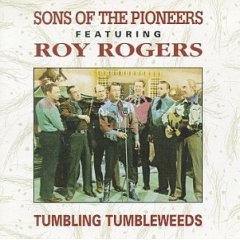
"Tumbling Tumbleweeds" is a song composed by Bob Nolan. Although one of the most famous songs associated with the Sons of the Pioneers, the song was composed by Nolan in the 1930s, while working as a caddy and living in Los Angeles. Originally titled "Tumbling Leaves," the song was reworked into the title "Tumbling Tumbleweeds" and into fame with the 1935 Gene Autry film of the same name. Members of the Western Writers of America chose it as one of the Top 100 Western songs of all time.
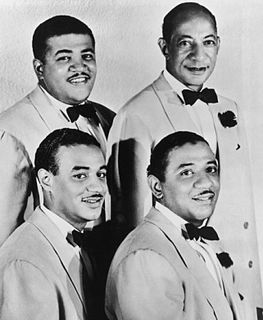
The Mills Brothers, sometimes billed the Four Mills Brothers, and originally known as the Four Kings of Harmony, were an American jazz and traditional pop vocal quartet who made more than 2,000 recordings that sold more than 50 million copies and garnered at least three dozen gold records.
"Make Love to Me" is a 1954 popular song with words and music written by a larger team than normally is known to collaborate on a song: Bill Norvas, Alan Copeland, and the New Orleans Rhythm Kings, comprising Leon Rappolo, Paul Mares, Ben Pollack, George Brunies, Mel Stitzel, and Walter Melrose. The melody was derived from a 1923 song, "Tin Roof Blues", composed by the New Orleans Rhythm Kings.
Thomas Kilpatrick, known as Tommy Scott, is a Scottish songwriter, producer and singer. As a songwriter and producer in the 1960s and '70s he had numerous hits in pop, rock, and folk styles; including records with Them, The Dubliners, Sydney Devine, Twinkle, and Lena Zavaroni. From the 1980s onwards he has sung and recorded traditional Scottish music.
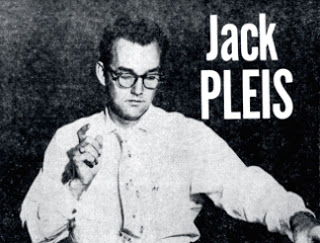
Jack K. Pleis was an American jazz pianist, arranger, conductor, composer and producer. He recorded on London and Decca Records in the 1950s, and Columbia Records in the 1960s. During the course of his career, Pleis worked with many artists, including Louis Armstrong, Harry Belafonte, Bing Crosby, Sammy Davis Jr., Benny Goodman, Earl Grant, Brenda Lee, and Joe Williams. Between 1950 and 1976, over 150 songs were arranged by Pleis. His surname is pronounced "Pleece".
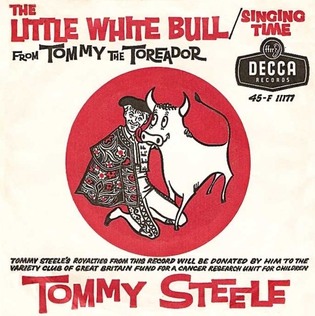
"Little White Bull" is a song by English rock and roll singer Tommy Steele, released as a single in November 1959. It was included on the EP Tommy the Toreador from the film of the same name in which Steele also starred. Steele's royalties from the single's sales were donated to the "Variety Club of Great Britain fund for a cancer research unit for children". The song peaked at number 6 on the UK Singles Chart and it was awarded a silver disc in January 1960 for 250,000 sales in Britain.
"Rock with the Cavemen" is a song by Tommy Steele and the Steelmen, released as their debut single in October 1956. It peaked at number 13 on the UK Singles Chart, making it the first British rock and roll record to enter the chart.











